Fall in the USA - 2

Mystic of Holyhead (successor to Lynn Rival)
Rachel and Paul Chandler
Thu 3 Nov 2016 16:15
In Philadelphia we stayed in a "trinity row"
house, with a small room on each floor (3 + basement) connected by
a narrow, winding staircase. It was in one of the narrow streets
of the Northern Liberties district, within walking distance of the
Old City.  A street in the old part of Philadelphia 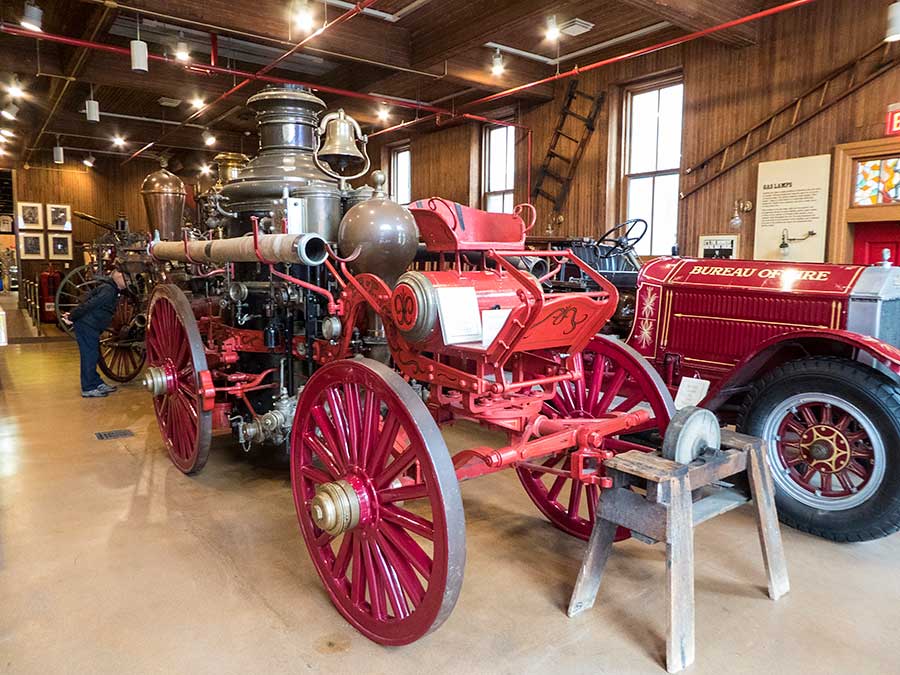 We found a firefighting museum - the pride in each local 'engine' remains, although they are no longer independent Unfortunately it rained much of the time we were there so we didn't do as much ambling around as we'd hoped but it was amazing to see inside the Hall where delegates from the original 13 colonies met on July 4 1776 to sign the Declaration of Independence from Britain. Until 1790 Philadelphia was the capital of the new nation so a lot of important activity - not least the writing of the US Constitution and Bill of Rights - went on here. 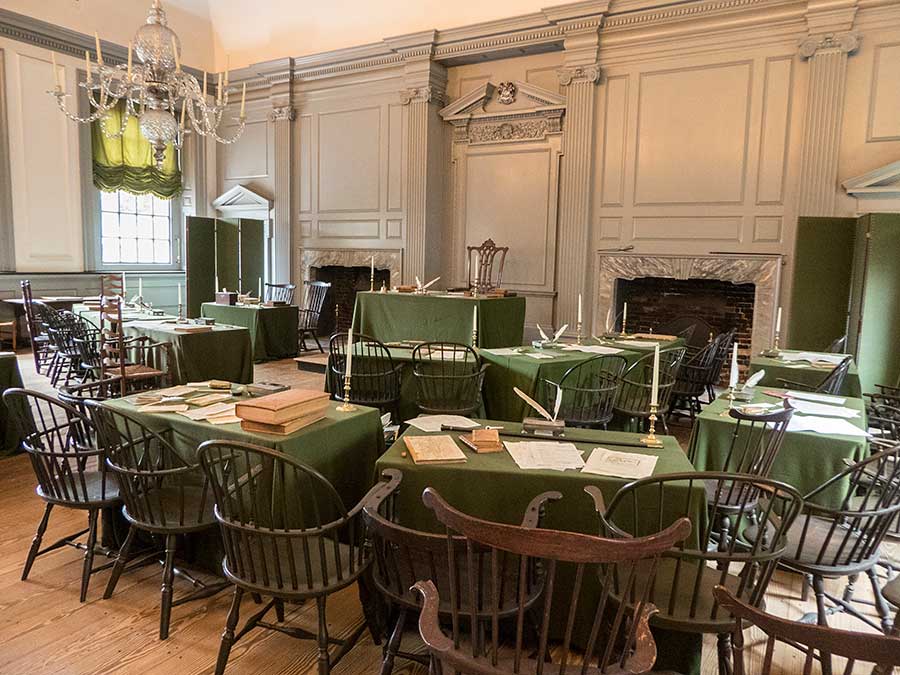 Here the Declaration of Independence was made - the decor and furnishings largely original  Compulsory pic of the Liberty Bell Another highlight for us was visiting the Barnes Foundation. It is a fascinating (private) collection of art that is beautifully presented and well worth making a detour to see, even if you were not attracted to Philadelphia for other reasons. From Philadelphia we drove south to Fredericksburg, Virginia, by-passing Washington, DC for the time being. For a few days we travelled around the Virginia countryside mostly visiting sites related to the Civil War but also the lovely Shenandoah National Park, part of the Blue Ridge Mountains.  A little real hiking, in the Blue Ridge mountains While travelling around we had hoped to see some exciting wildlife. We scoured the skies for bald eagles but saw only vultures and buzzards. In the north we were encouraged by signs warning of moose, but (maybe a good thing while driving) we didn't see any. In the Adirondacks we read signs telling us not the feed the bears: "a fed bear is a dead bear" (the problem being that a bear who gets used to human food becomes a nuisance to local communities and has to be shot). Finally in Shenandoah we saw a black bear foraging at the roadside.  More interested in foraging than in us! Fredericksburg is at the centre of a cluster of civil war battlefields where over 13,000 were killed. Like so many historic sites in the US, the area is well maintained by the National Park Service, with information signs dotted around, describing the events and poignant memorials to the dead (by State). We walked around the Wilderness and Spotsylvania battlegrounds, surprised by how well the trenches were preserved.  In the Wilderness. The remains of the trenches can still be seen, but the denseness of the forest has changed  Trenches more easily seen, at Spotsylvania In Richmond, the capital of the Confederacy, we visited the Tredegar Ironworks and nearby Civil War museum. Though poorly lit, the museum is an excellent source of information about the origins of the Civil War, which go back to the westward expansion of the USA - the Louisiana Purchase and the Mexican War - as well as the abolition of slavery. 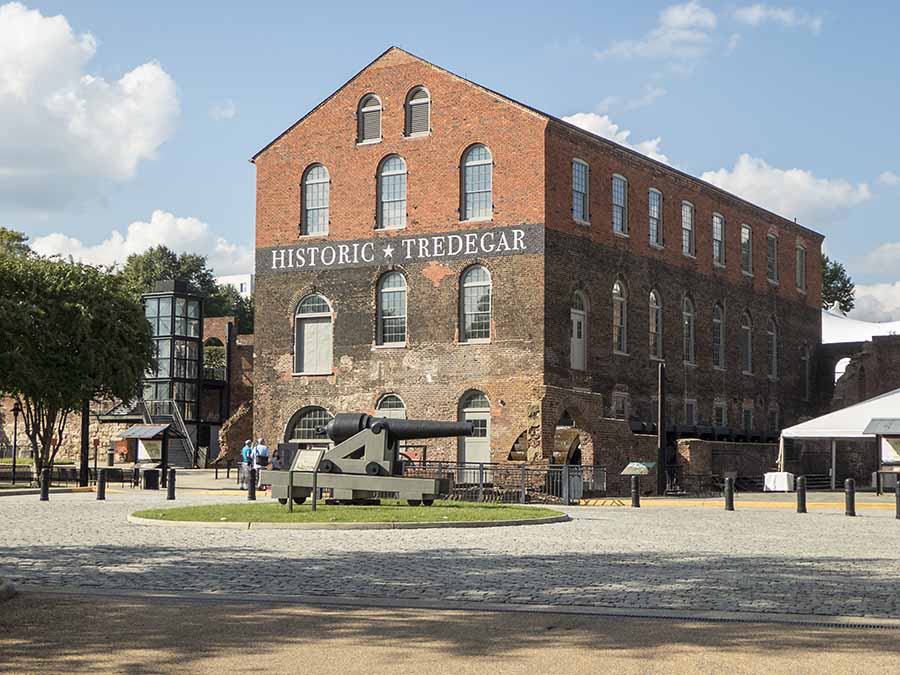 So now we know whose side the Welsh took! This factory produced most of the Confederacy ordnance It was time to head north again, towards DC, to meet Lynda, who flew in for our final week of the trip. It was her first visit to the USA so we had to pack a lot in. We were all very impressed by the District of Coumbia. It was interesting to see, in the capital of the USA, many car number plates stating "No taxation without representation", an ironic parallel to a major grievance expressed in the Declaration of Independence! (Residents of DC have no democratic representation in either the Senate or the House of Representatives, other than a delegate who can vote only on minor procedural matters.) 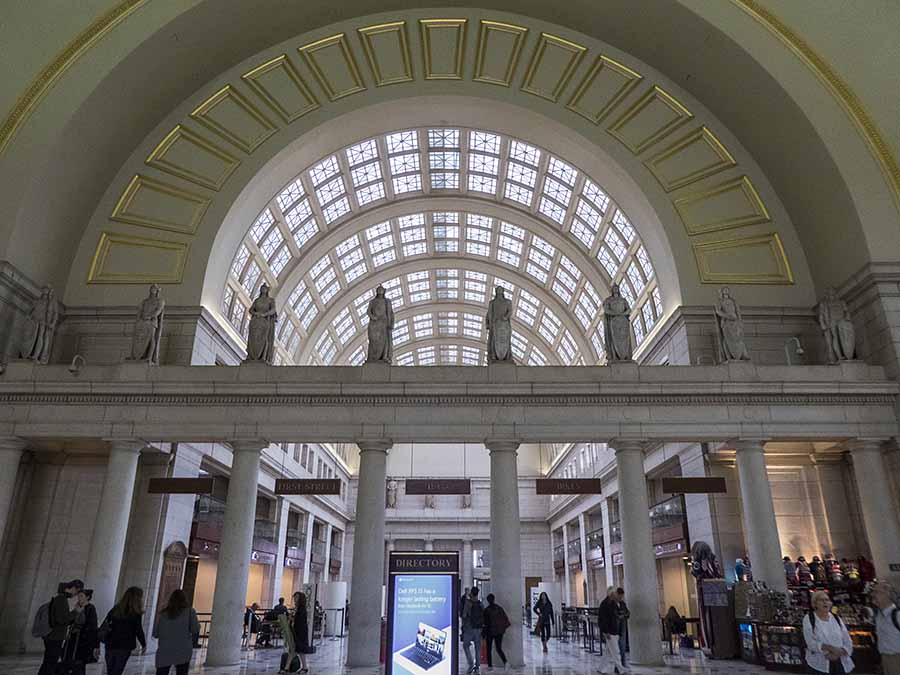 Our exploration of Washington was to extend from Union Station in the east . . . 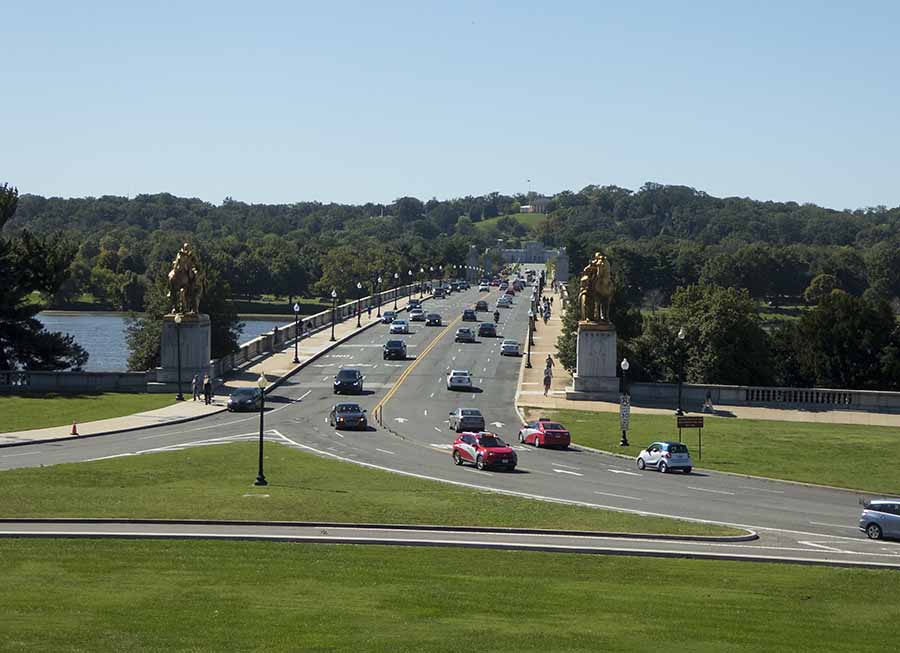 . . . to the Potomac River, Arlington Memorial Bridge, in the west |